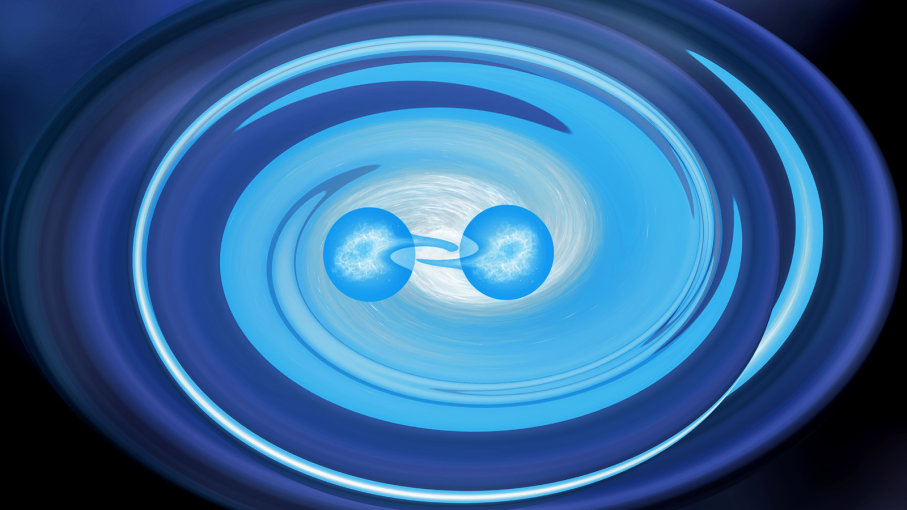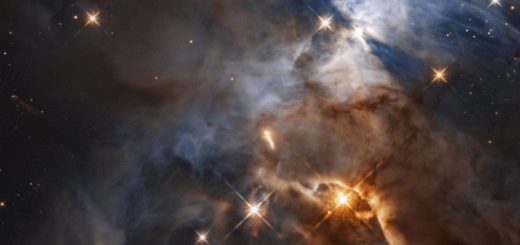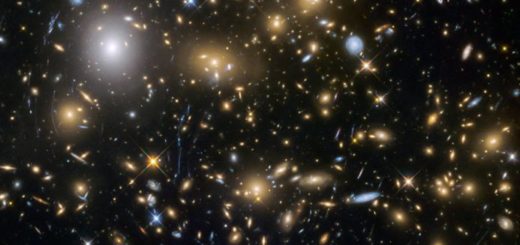Just Four Dimensions in the Universe, if You Believe Gravitational Waves

The super smash-up of two neutron stars 130 million light-years away provided some great clues for investigating how many dimensions our universe has. MICHAEL STEVENSON/UIG/GETTY IMAGES
Many physics theories predict more dimensions beyond the four that we know and love (three dimensions of space, one of time). Having those extra dimensions would be handy for explaining some of the universe’s most confounding mysteries. For example, some theories that explain dark matter and dark energy are anchored in the idea that there are many more “extra” dimensions that exist alongside the ones we experience every day; they’re just vanishingly small and very difficult to observe.
Last year, however, the universe did us a solid. One hundred and thirty million light-years away, two neutron stars collided and merged, blasting the cosmos with a tsunami of gravitational waves that were detected by the Laser Interferometer Gravitational-wave Observatory (LIGO) in the U.S. and the Virgo observatory in Italy on Aug. 17, 2017. In addition, the event erupted with a kilonova, creating a very bright gamma-ray burst, leaving heavy elements – like gold – in its wake. The detectors in the U.S. and Italy recorded the ripples in space-time while NASA’s Swift space observatory (and others) detected the electromagnetic radiation.
Astrophysicists got really excited about this event. For the first time in history, they observed both electromagnetic waves and gravitational waves from the same event — they can compare those two signals to make new discoveries about our universe. This discovery, which resulted in the Nobel Prize in Physics for scientists at LIGO, ushered in a new age of “multi-messenger astronomy” (see Gravitational Wave Detectors Discover Colliding Neutron Stars — and Uncover a Scientific Goldmine).
Now, researchers have used this historic event to probe into the layers beyond the four dimensions of space-time to reveal that our universe might be a lot simpler than some physics theories predict.
Let’s get back to the mysteries of dark matter and dark energy we mentioned. The vast majority of matter in the universe is thought to be embodied by stuff that we cannot see. We can, however, feel its gravitational effects, so we know it’s there — whatever “it” is. Dark energy is even more puzzling. Like dark matter, dark energy is “dark” because we don’t really know what it is. But we know it’s out there, and cosmologists believe that it is responsible for driving the accelerated expansion of the universe.
Many theories have been proposed for both dark matter and dark energy, some of which require the existence of extra dimensions beyond the four we know of. Interestingly, gravitational waves have been tapped as a possible mechanism that can be used to probe into this unknown extradimensional realm.
Put simply, as gravitational waves propagate at the speed of light through space-time, scientists think that some of the gravitational waves’ energy will “leak” into extra dimensions, if these extra dimensions exist. So, when detected by a gravitational wave observatory, the waves would have a smaller amplitude than predicted. Normal electromagnetic radiation (i.e., light from a gamma-ray burst), does not interact with these extra dimensions and will remain unchanged. By measuring the gravitational wave signal from last year’s neutron star collision and comparing it with the electromagnetic signal, the two should, in principle, exhibit a discrepancy if these extra dimensions exist.
Alas, according to this research, there was no difference, indicating that both light and gravitational waves only traveled through four-dimensional space-time – just as Einstein predicted with his theory of general relativity, the same theory that predicted the existence of gravitational waves over a century ago.
This doesn’t necessarily mean extra dimensions don’t exist – it could just mean that our theories about how gravity interacts with these dimensions need to be modified or that we simply need to measure more multi-messenger events – but after only three years since their discovery, gravitational waves are already living up to their promise of challenging some key cosmological theories.



 Creators of mankind
Creators of mankind Description of “Tall white aliens”
Description of “Tall white aliens” Where they came from?
Where they came from? About hostile civilizations
About hostile civilizations The war for the Earth
The war for the Earth “Tall white aliens” about eternal life
“Tall white aliens” about eternal life Video: “Nordic aliens”
Video: “Nordic aliens” Aliens
Aliens Alien encounters
Alien encounters The aliens base
The aliens base UFO
UFO Technology UFO
Technology UFO Underground civilization
Underground civilization Ancient alien artifacts
Ancient alien artifacts Military and UFO
Military and UFO Mysteries and hypotheses
Mysteries and hypotheses Scientific facts
Scientific facts


















